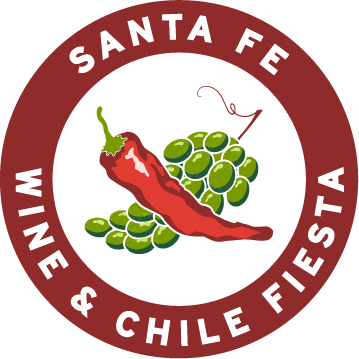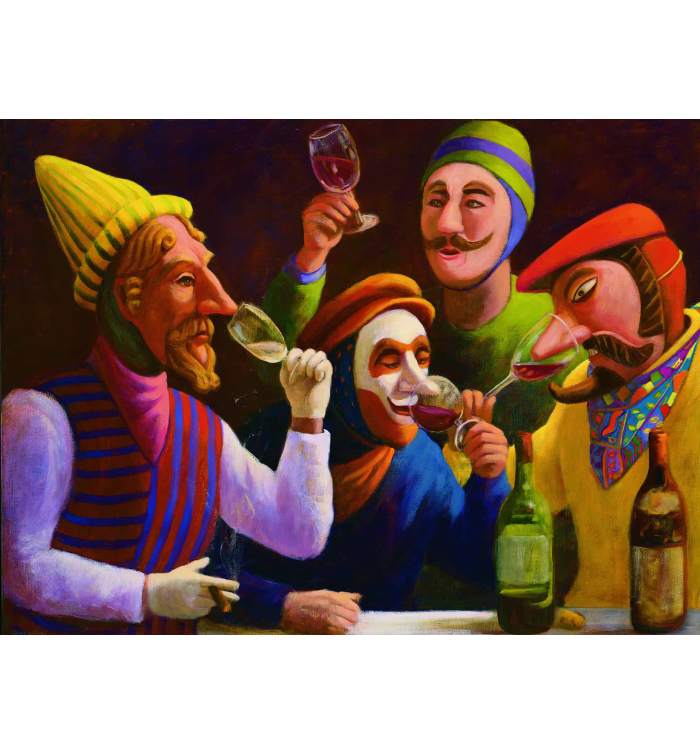2001 Patrick McFarlin Signed Lithograph
2001 Patrick McFarlin Signed Lithograph
Born in Arkansas, McFarlin went on to study at the Memphis College of Art, University of Arkansas, Little Rock, and the California College of Arts and Crafts in Oakland in the late 1960s.
In 1990, he moved to Santa Fe, where he worked for four years on a SITE project painting over three-hundred portraits of people in the city that were exhibited at SITE in 1997.
Now known as a New Mexico landscape and portrait painter, McFarlin favors a rather brushy technique—one that suggests rather than defines the scenes he paints.
2025 Rick young "Rio Grande Rythm"
"Rio Grande Rythm" Poster 24"x 28"
Rick Young headed west after earning an art degree from Miami University in Ohio. Initially focused on the high country, Rick’s attention shifted to the expansive mesas and canyons of the Southwest after he and his wife built a log cabin in southern Colorado. He has long found his artistic inspiration in the land and peoples of the Southwest. Rick celebrates this region through colorful, rhythmic paintings.
Now retired from a teaching career, Rick paints full-time from his home in Castle Rock, CO. A longtime advocate for our national parks, Rick completed artist residencies at Mesa Verde National Park (2019) and at Capitol Reef National Park (2021). Rick’s landscapes highlight the beauty and inspiration to be found on our public lands.
Rick is represented by Acosta Strong Fine Art on Canyon Road in Santa Fe and by Mirada Fine Art Gallery in Denver.
2024 Evelyne Boren "La Cieneguilla Morada in the Fall"
"La Cieneguilla Morada in the Fall" Poster 24"x 26"
Evelyne Boren (a native of Munich, Germany) enjoys worldwide recognition for her impressionistic art interpretations of life, people and scenes of the Southwest, Mexico and Europe in watercolor and oil paintings. Evelyne’s life reads like an adventure story—from the time she attended school in Switzerland and England, to her move to the United States in 1958 and her stunt work in movies.
Before beginning her full-time professional career as an artist, Evelyne had an aquatic career that included underwater stunt doubling in the James Bond films “Thunderball” and “You Only Live Twice”.
She was the first woman in the world to swim with a killer whale in the movie “Namu the Killer Whale”. She appeared on the television programs “What’s My Line” and “To Tell The Truth”, where no one guessed her profession. She also appeared frequently in the television series “Sea Hunt”, “Aquanauts” and “Flipper” where she helped train the star dolphin.
From these adventures she turned to painting in 1962, while on location filming in the Bahamas. The breathtaking color and beauty of the islands stirred a deep desire within Evelyne to express her feelings on canvas, so she began to paint. Her enthu-siasm, drive and discipline have resulted in a very successful art career. Evelyne has studied with several important artists, but has developed a style that is strictly her own.
In 1990, in Roussillon, France she entered a competition for paintings that used only burnt sienna, raw sienna and yellow ochre pigments that are mined locally. The only foreigner, she won first prize over forty other French artists. In 1997, Evelyne had the honor of having one of her paintings selected for the official Santa Fe Opera Poster. She has more then 4,000 original paintings in private and corporate collections around the world.
Evelyne maintains a permanent studio in Santa Fe, New México and in San Pancho, México.
2023 Robert Striffolino “RIPPLE PLAY"
2023 Robert Striffolino Poster - size 24"x 32"
Robert Striffolino was born in New York in 1950 and was raised on Long Island. Although from his childhood he could draw spontaneously with extraordinary skill, he never took a formal art class, feeling that his drawings were so personal he could allow no one—not even teachers—to interfere with his art.
“The affinity I have always felt toward Nature continues to fuel my creative drive. Painting continues to intrigue and impassion me providing new ways to stretch and grow. For this I am grateful. It has been a constant companion and certainly my major mode of expression throughout the years.” Robert S.
2000 Frederico Vigil Signed Lithograph
2000 Frederico Vigil Signed Lithograph
Born and raised in Santa Fe, along what used to be the barrio near Canyon Road, Vigil specializes in frescoes. He first discovered the art of fresco painting during an internship in 1984 with Lucienne Bloch and Stephen Pope Dimitroff (themselves apprentices to renowned muralist Diego Rivera).
Inspired by these and other fresco masters, Vigil has since completed more than two dozen major fresco pieces, including one of the largest concave frescos in the world (inside the Torreón at Albuquerque’s National Hispanic Cultural Center, a fresco that spans 4,000 square feet).
One of his most recent works is located at the University of Notre Dame.
2007 Harry Greene Signed Lithograph Print
2007 Harry Greene Signed Lithograph Print
Harry Greene (1934–2024) was born in New Jersey and studied painting at Syracuse University. Early in his career, he exhibited widely in regional and juried shows, including the Butler Annual, the Pennsylvania Academy of the Fine Arts, and the Carnegie International. After relocating to Florida, he taught painting, exhibited in galleries across the state, and was selected for the Jacksonville Museum’s Best of Florida exhibition.
Travel in Europe, where he studied the works of Piero della Francesca, Giotto, and Masaccio, further shaped his artistic vision. In the early 1990s, Greene settled in New Mexico, where he found lasting inspiration. His expressive, richly colored paintings draw from the architecture, landscapes, and rural communities of the Southwest. Although based on direct observation, his works are imaginative composites of the elements he encountered.
Greene’s art was shown prominently at Manitou Gallery, where his creativity resonated with many. His career reflected a lifelong dedication to painting and the profound fulfillment he found in following his artistic path.
2002 Doug Coffin Signed Lithograph Print
2002 Doug Coffin Signed Lithograph Print
Coffin, a painter of contemporary art and a sculptor, often draws from his sense of “apartness” as a Potawatomi/Creek Indian. A feeling from his having spent his first 20 years living on the grounds of the Haskell Indian College boarding school in Lawrence, Kansas, where his father served as the school’s athletic director. (During the summers, Coffin would stay with his grandmother on the Potawatomi Reservation.)
Best known for his monumental, brightly painted steel and mixed media sculptures, Coffin has honed a style that merges the ancient totemic form used by many Native cultures with the abstraction and geometric forms of the modernist. He earned his BFA from the University of Kansas and later an MFA from the Cranbrook Academy of Art. His work has been exhibited widely throughout the world, including the Grand Palais in Paris and the John F. Kennedy Center in Washington, D.C.
2005 Susan Contreras Signed Lithograph
2005 Susan Contreras Signed Lithograph
Born in Mexico City to a mother who was a portrait painter and a Mexican jeweler father, Susan Contreras moved with her family to Santa Barbara, California when she was age 5. The family traveled frequently to Mexico where she became fascinated by ceremonies involving masks, such as the Day of the Dead. It was the bringing together of drama and color, and that combination underlies her paintings.
In 1968, her family moved to Santa Fe, New Mexico so her sister could attend the School for the Deaf. Susan got interested in photography from a high school class. Then she studied at the Brooks Institute in Santa Barbara and completed a degree in photography, later receiving a BFA and MFA from the University of California at Santa Barbara. She also studied at Maine’s Skowheagan school of Painting and Sculpture. Her greatest academic influences, though, came Nathan Oliveira and Wayne Thibeaud at the Santa Fe Institute of Fine Arts while her early work as a photojournalist gave Contreras an interest in visual narrative that has informed her paintings from the beginning.
2012 Phyllis Kapp "Soft Summer Days"
"Soft Summer Days" Poster 24" x 18"
It was 25 years ago that Kapp opened her studio on Canyon Road in Santa Fe. The studio eventually evolved into Waxlander Gallery, where over time she nurtured and represented countless other artists.
Kapp, who was born in Chicago in 1930, has often said she is inspired by nature, specifically the landscapes of northern New Mexico. But she is quick to point out that her work stays fresh and is always changing in spite of her long-standing attraction to this rugged region as subject matter.
“Nature,” she once said, “doesn’t do things in the same way all the time. Why should I?”








